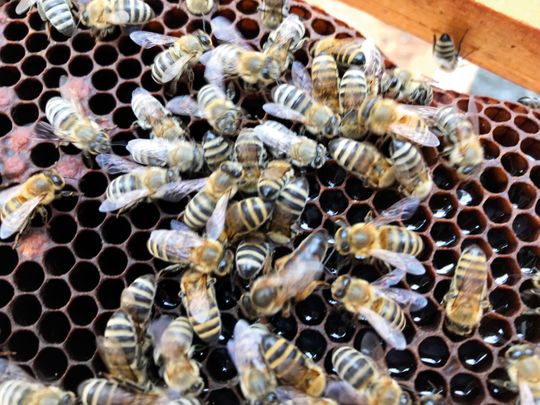
The bees are going nuclear. Enraged, that is. Life in the honeycomb is seething. Because bees are now in the news in bold headlines. An old joke used to ask, “What does Mrs Bee call her husband when they have a moment of privacy in their beehive?” The answer being, “Hubby Bee”. Sounds cute, even if incredible, for we know that bees don’t talk but sting, when incensed. And for now, the joking is over. All their hard work — and bees we also know are among the hardest workers of all — apparently is being belittled. That is, their product — honey, pure honey — is now in the hands of man, as it has been for centuries, only now it appears that the product comes tainted.
Newspapers are reporting that some brands of honey marketed as ‘genuine 100 per cent’ are, in fact, mixed and adulterated. A new test known as the Nuclear Magnetic Resonance (NMR) test is showing that some impurities are nothing else but a syrup trying to pass itself off as honey. Sugar syrup. Sugar. Another term that people have been known to use as an endearment, but one can rest assured that that’s not something Mrs Bee would have accepted from her beloved. “No ‘sugar’ in the honeycomb, thank you, Hubby Bee. We just do honey here, and you can call me honey for as long as you like. But no sugar.”
For the moment, the accusations fly back and forth in the media, like an erratic bee line, with well-known honey manufacturers denying any wrongdoing and any knowledge of adulteration, and by extension therefore, no false marketing. Even the NMR tests have been disparaged while the industry/experts carrying out the tests vouch both for their superiority and validity over the one currently prevalent, known ironically as the C4Sugar test.
In a humorous vein, my mate Barney said: “I always believed it was S for Sugar.” But, as he points out, C4Sugar sounds like “See for Sugar”! It is this test, allegedly, that is failing the bees. That is, it is allegedly not picking up the impurity levels.
All of which got me thinking about writing. How we writers, all, when seated before our computer screens, confronted by a blank page and the need to pattern that page with words — six hundred and fifty at the very least — how we let the thoughts roam. Sometimes, roaming thoughts have a knack of ranging so far and wide that they become like runaway horses on a ranch, hard to lasso and rein in; sometimes, like emus and ostriches, they fail to get off the ground. They refuse to soar, in other words.
And which writer wouldn’t like to make words soar?
Someone once said that imagination was separated from reality by only a sheer, nearly-transparent nylon curtain. It was up to us writers to move the curtain aside, and voila! Truthfully, as a writer myself, it doesn’t work that way. A lot of days, the curtain is definitely not nylon but steel. I was going to say iron, but Churchill patented that one decades ago. And I strive to be as ‘100 per cent’ as I can be, as with Mrs Bee and Hubby Bee. But with writing, unlike with honey in the beehive, a lot of words, ideas, sayings are subject to a degree of tainting/borrowing/reusing/recycling/rebuilding. And words, to their credit, have accepted that and permit it. Within reason, of course.
One writer may be influenced by the work/thoughts of another; and so our words may extend, garnish and glorify the words of another. It’s interesting to note, therefore, how with honey (which is for the body) and writing (for the mind), the concept of ‘originality’ may be viewed quite differently.
Kevin Martin is a journalist based in Sydney, Australia.




_resources1_16a31069e4e_small.jpg)







